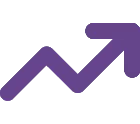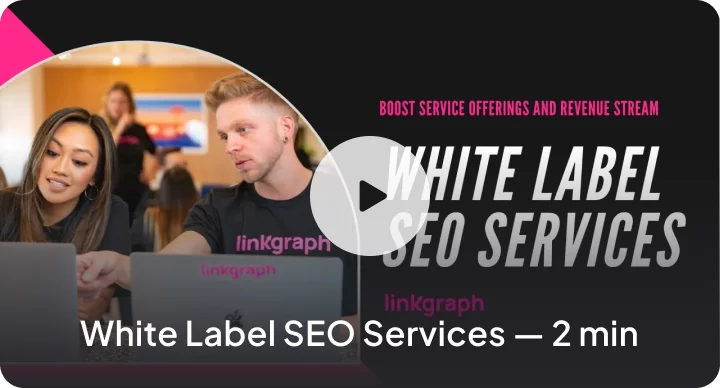What Are Canonical Tags and When to Use Them
A canonical tag, often referred to as rel=“canonical,” is an HTML tag that tells search engines which URL is the primary version or “master copy” of content. […]
A canonical tag, often referred to as rel=“canonical,” is an HTML tag that tells search engines which URL is the primary version or “master copy” of content. These straightforward tags give site owners the ability to suggest one URL for Google to designate as the preferred page to appear in searches. Canonical tags also prevent SEO issues that arise from duplicate content.
These simple HTML link elements play a major role in your site’s SEO. They’re also easy to use, but only work when used correctly. If you’re unfamiliar with canonical tags, this article will help you learn how, when, and why to use canonical tags and how to avoid canonical tag issues.
What is a Canonical Tag?
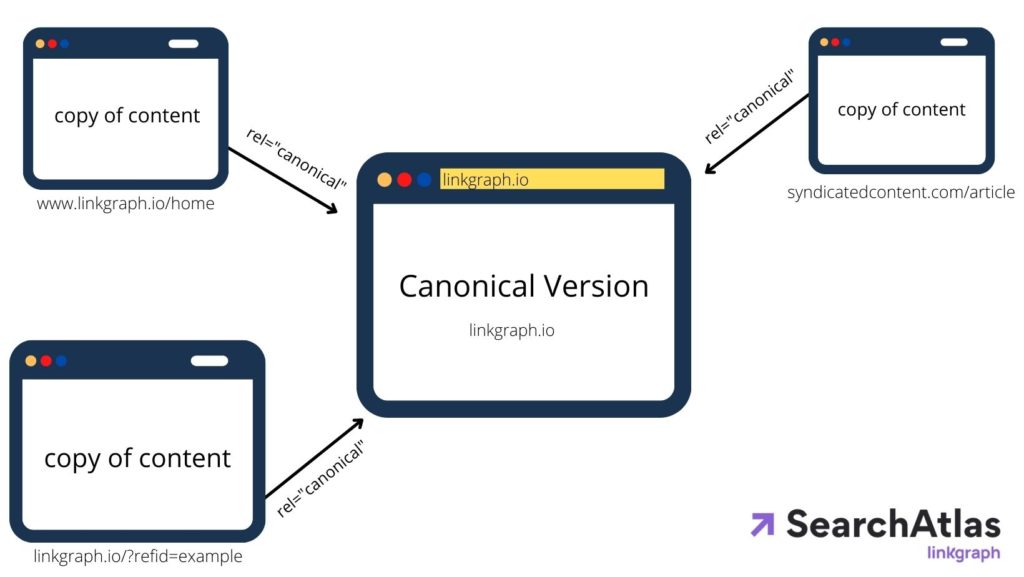
A canonical tag is an HTML link element inserted into a page’s header or <head>. These tags were developed by search engines and rolled out in 2009. They’re one of those great examples of search engines working with site owners to improve the quality of search results.
Canonical tags tell search engines one of the following:
- That content on a page is a duplicate of another page in addition to which of the pages should be considered the primary version.
- For single pages with multiple URLs, the tag tells Googlebots or Bing bots which exact URL is the correct one to index.
This tag tells the crawler to index the primary page rather than the duplicate. The canonical URL indicates to Google which page the search engine should display in search engine results, this tag tells the search engine that the primary version is the one that should receive the organic search visibility.
Keep in mind that while you can tell Google which URL to index, Google may not follow your recommendation.
A canonical tag looks like this:
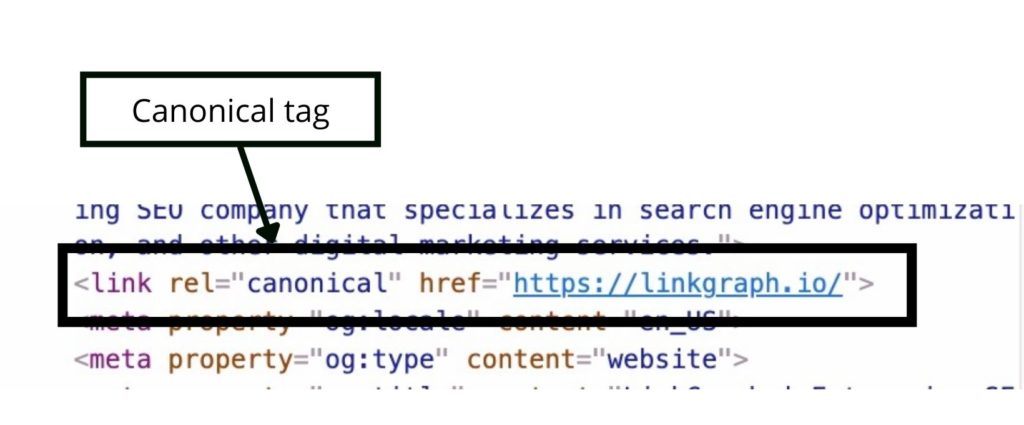
Or
<link rel=“canonical” href=“https://example.com“ />
What Are the Parts of a Canonical Tag?
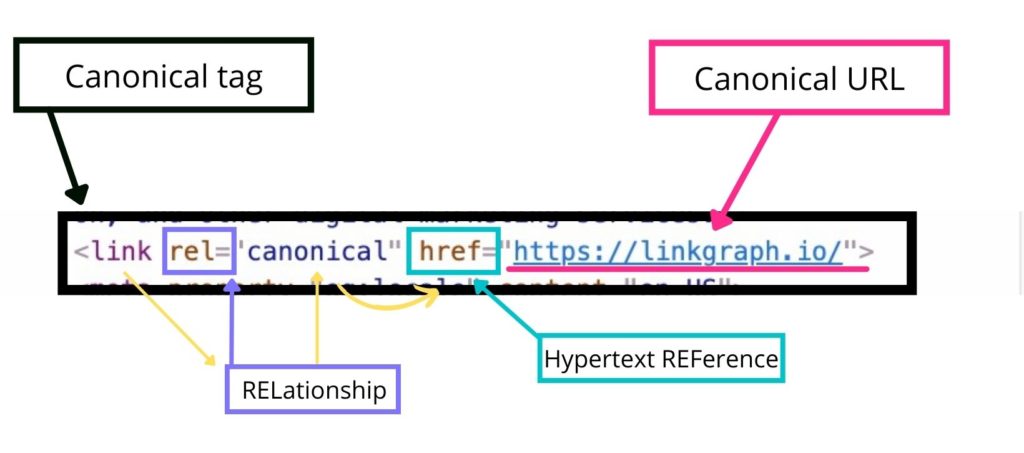
A canonical tag is also referred to as a canonical link element–which is a bit more intuitive label for this unique HTML code. Why? Because a canonical tag provides a canonical link and defines the relationship between the page and the link.
In HTML, rel tells the Googlebot that there’s a relationship between the page and a linked resource. In this case, the relationship identifies the canonical page which appears after the href attribute (href is a hypertext REFerence).
What Is a Canonical URL
A canonical URL is the primary version of a webpage that site owners want search engines to recognize as the primary source of the content. The canonical URL is the webpage that you want the webcrawlers to index as the correct source of the content. This part of the link element appears after the href=”canonicalURL”.
Is a Canonical Tag the Same as a Canonical URL?
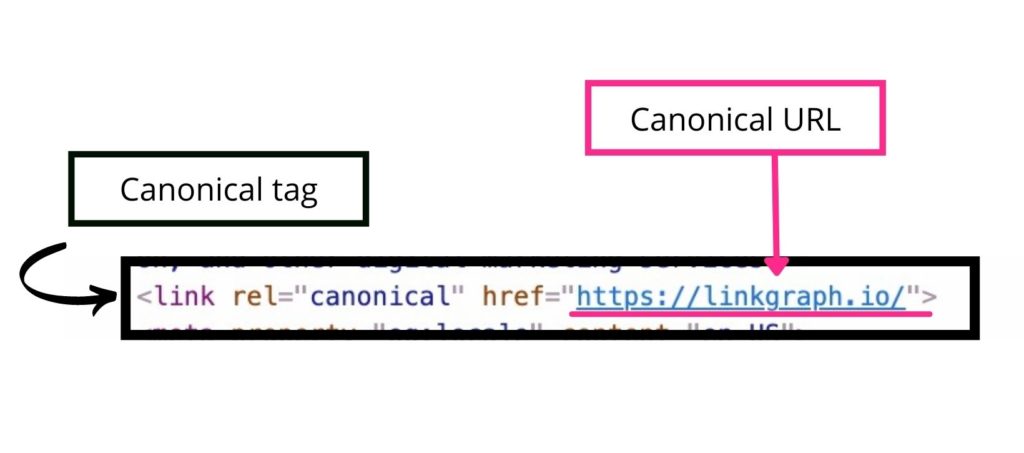
The canonical URL appears within the canonical tag. The canonical URL is the hyperlink reference element within the canonical tag. This denotes the exact URL that should be considered the canonical version of the source content.
Why Does Canonicalization Matter?
When it comes to e-commerce sites and sites that generate ad revenue, you want to be sure you take every opportunity to put your best URL forward in the search engine results pages (SERPs). And canonicalization does just this by telling Google which site should be indexed. Not only can you gain more control over your site, but you’re also able to funnel users to the highest value page.
Should You Use Self-Referential Canonical Tags?
Even a webpage that may seem unique can be found under a variety of URLs. For example:

While each of these URLs will display the same homepage, each is also technically its own URL. This can lead to the same issues as having duplicate content on a third-party website. Without a canonical tag on linkgraph.io, search engine algorithms will not which is the preferred URL to display to searchers.
Making things even more confusing to search engines, dynamic pages often have a wide array of tags, each of which has its own URL. Content management systems (CMSs) like WordPress often automatically embed tags into web pages, too. So, even a basic page will wind up with a multitude of URLs–each perfectly indexable by search engines.
So, your best bet is to place a canonical tag within the canonical URL’s header, as well.
Canonical Tags Streamline Data Collection and Analytics
Furthermore, as you’re tracking your search metrics, you want to compile all organic searches for one page under the same URL. Your canonical tags ensure only the specified page will receive search result metrics.
Prevent SEO Conflicts with Syndicated Content
Many websites build backlinks through content syndication. However, creating content can be a timely and costly investment. Through syndicated relationships, you can provide users with your existing high-quality content on third-party sites. Or continue to build your library of content on your site while expanding your brand visibility.
However, without canonical tags, search engines will not know whether to index your site for the article or the third party. Canonical tags allow you and your syndication partner to simplify this problem. Note: you can also use the noindex tag on one of the pages to prevent duplication.
What’s the Problem with Duplicate Content?

Duplicate content can cause various issues related to SEO. When Googlebots index webpages with identical or very similar content it can:
- Slow down the indexing process resulting in less of your site being indexed.
- Register as a negative ranking signal back to Google, causing your pages to rank further down the SERPs.
- Confuse the search engine as to which page it should display to searchers.
How Canonical Tags Help SEO
First and foremost, canonical tags are one of the few ways you can influence how Google presents your site to searchers. Canonicalization also prevents you from getting ‘docked’ in PageRank for having duplicate content–although Google does not directly penalize duplicate content, they do prioritize original content that’s well-organized,
Finally, they also allow you to provide users beyond your website with excellent content for backlinking and brand building.
What Is Duplicate Content?
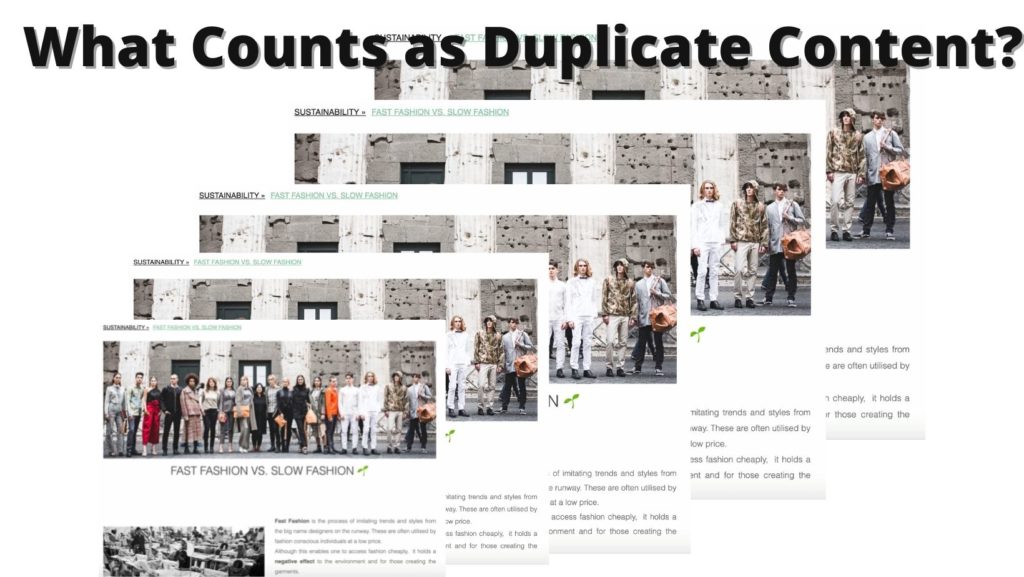
Duplicate content isn’t just copy-and-pasted text. It can be written text, images, and other media that are exactly the same, similar, or reordered. Google also considers place-filler text and images from a CMS duplicate content if it’s published to the web.
Basic information, such as copyright text, on every page on your site can even be flagged as duplicates.
How to Use Canonical Tags
Ultimately, for the best SEO results, you will want to use canonical tags throughout your website. Once you update your existing pages, you will want to continue to implement canonicalization best practices.
The first step is to identify which URL version of your site pages should be the canonical URLs. Google prefers if your canonical links are consistent in formatting. So, if you use the “www.” in your homepage’s canonical link, include it in your other canonical URLs.
For example, at LinkGraph, we use the “https” protocol in all over our canonical tags, but do not include the “www.”

This will solve any issues with multiple URLs pointing to the same page.
Next, you will want to tag or eliminate any duplicate content within your site. You can do this with SearchAtlas’s Site Audit tool. It’s as simple as viewing your Content/Duplicates report.
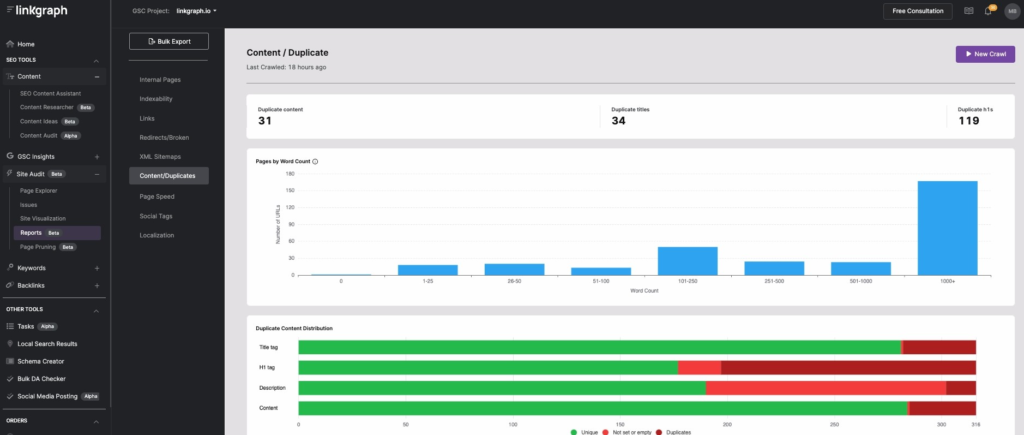
Finally, you will want to find any remaining duplicate content on third-party sites. You can use a tool such as Copyscape to do so. Once, you’ve identified content elsewhere on the web, you will want to decide if
- Your content has been stolen and republished without permission
- You have accidentally plagiarized pre-existing content or written content that is too similar to another page’s
- A syndicated page is registering as a duplicate
- You have pages with identical content but it’s appropriate, such as a product appearing on two different category pages
Then, you will want to respond with the corresponding solutions:
- Report the duplicate to Google
- Immediately remove the content and produce original, high-quality content
- Discuss with your syndication partner which page should be the canonical URL, then implement a canonical tag that reflects the correct canonical
- Employ the canonical tag with the designated canonical URL
When to Use Canonical Tags
When it comes to canonical tags, you can reduce duplicate content issues by always using canonical tags. However, if you’re updating your site, you want to prioritize:
- Product category pages with variation filtering: this includes differing sizes, brands, colors, and quantities. Each of these variations requires a different URL.
- Articles and pages that use pagination: often these are long blogs that have been divided into multiple pages.
- Product pages that appear on multiple category pages.
- Pages that have similar content, such as information about your business.
Implementing Canonical Tags on Your Website
Do you have to be a webmaster to implement canonical tags? Not necessarily. If you’re comfortable with working on your site’s HTML code, you can implement canonical tags on your own.
Here’s how to set up canonical tags:
Canonical Tags in HTTP Headers
The easiest way to employ your canonical tags is to insert and update the tag text in your HTTP header. This HTTP header section of your page looks like this ![]()
1. Identify your preferred canonical URL.
2. Add a rel=canonical link tag to the non-canonical page’s <head> section with the correct canonical URL link inserted into the HTML link tag.
It should look like this:

Copy-and-paste version:
<link rel=“canonical” href=“https://yoursite/canonicalpage” />
That’s all there is to it. There’s no need to be a webmaster to link to the canonical version of a page.
Verifying Your Canonical Tag
To check if you’ve correctly implemented your canonical tag with the correct URL, you will need to view the source code of your webpage. This process is easy.
- First, navigate to the version of a web page or piece of content you want to check using your browser.
- Then, right-click on anywhere in the page and select Inspect. This will open the source code of a page (or URL inspection tool) for your site or any other site to view others’ canonical link elements.
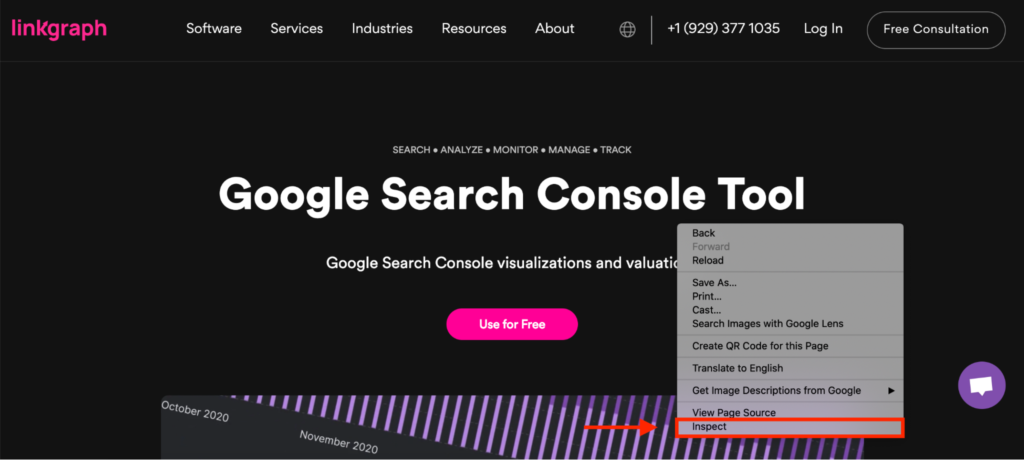
- After your HTML source code menu opens, press Ctrl + f for Windows or f + command for Mac. Then type “canonical” into the find by string, selector, or XPath.
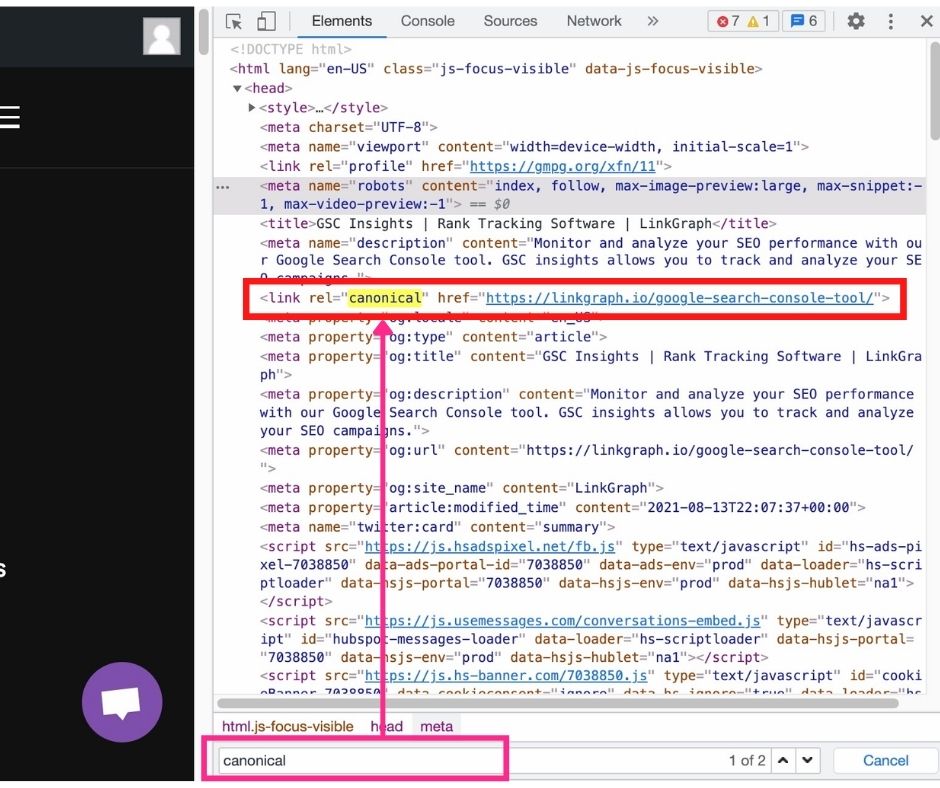
- The word “canonical” will come into view and highlight yellow, making the header easy to see for verification. Check to see the canonicalized URL is correct. If no results appear, then the page does not have a canonical HTML tag.
Other Ways to Verify Canonical Tags
Google Search Console and GSC Insights are great tools for finding pages that have been incorrectly tagged. As you’re looking through your organic traffic stats and notice search traffic arriving at a non-canonical page, your canonical tags may be incorrect.
To fix these pages, you will want to navigate to the specific URL then inspect the page.
Canonical URLs in Your Sitemap
When creating or updating your sitemap, do not include duplicate URLs. You only need to include your canonical URLs. Your sitemap’s inclusion of the canonical version of a page will hint to Google’s bots to not crawl the duplicate version of the content.
Should You Exclude Duplicate Pages in Your Robots.txt File?
You should not disallow duplicate pages in your robots.txt file. This would block Google from using these pages’ ranking signals. When you correctly implement canonical tags, ranking signals, such as engagements (clicks, scrolls, text entering) and content signals will count toward the canonical page’s metrics.
How to Use Canonical Tags in Your CMS
If you edit your site via a CMS platform such as WordPress, Shopify, Wix, or BigCommerce. Most of these CMSs will have specific instructions for adding canonical link tags, without directly editing your HTML document. We will cover the most common CMS platforms.
Using Yoast for Canonical Tags in Wix, Shopify, or WordPress Sites
Using Yoast SEO plugin for WordPress, Shopify, or Wix, you can easily edit and add the preferred URL as your canonical tag.
- After adding the Yoast SEO plugin, you will find the Advanced menu at the bottom of the Yoast editing. Open this menu.
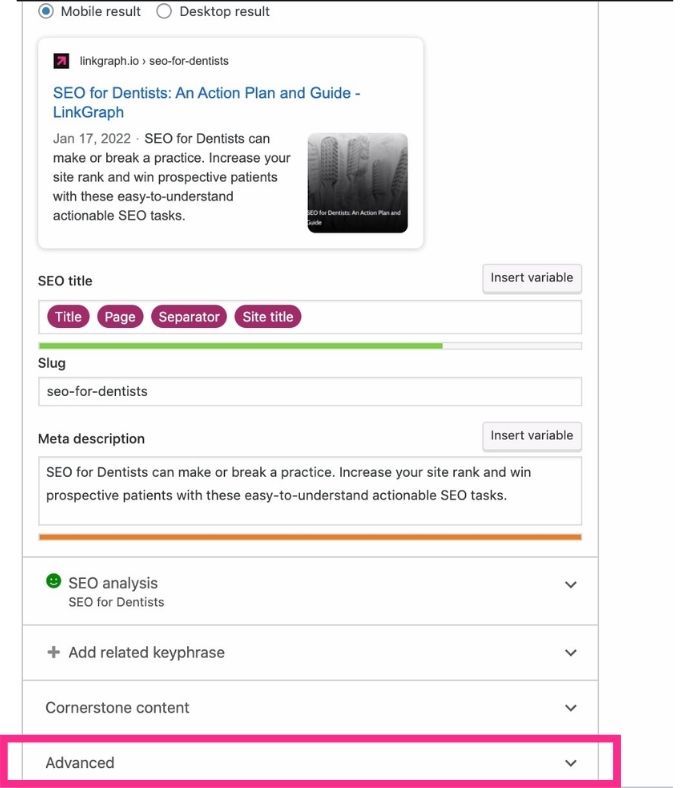
- Enter the version of the URL you want to designate as the canonical URL.
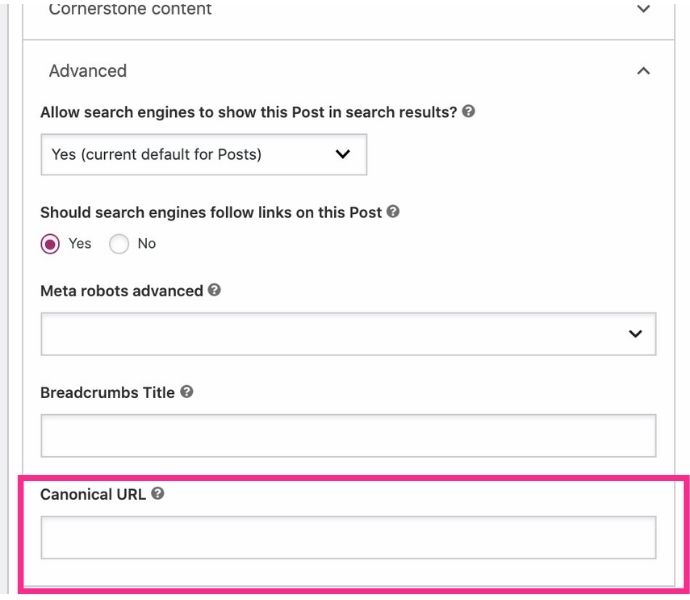
Don’t Make These 8 Canonical Tag Mistakes

Canonical tags only work well when implemented correctly–and incorrect implementation can be a disaster. Luckily, there are common mistakes you can avoid to ensure your e-commerce site or ad revenue site makes the most of your next Google crawl.
If you notice that you’re receiving organic traffic to a non-preferred version of a page, you will want to check for the following problems:
1. Do Not Use 301 Redirects Instead of Canonical Links
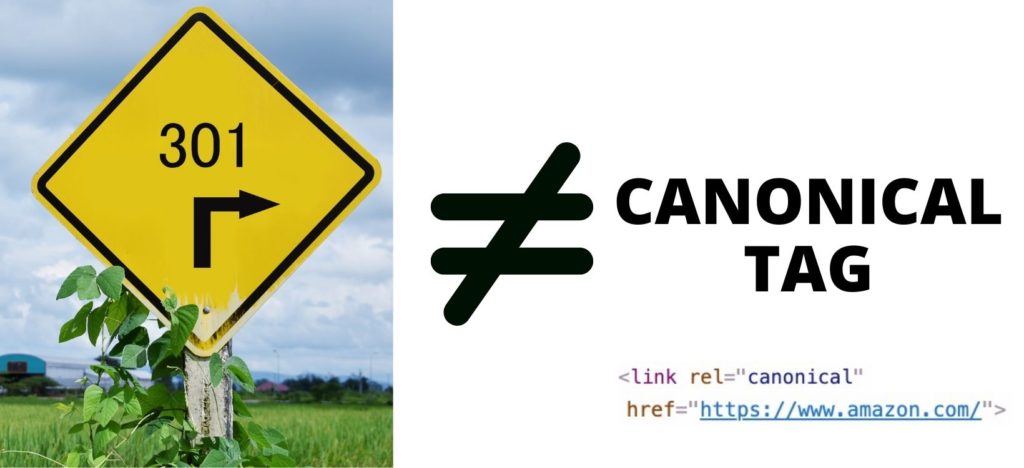
Google and other search engines created canonical attributes to improve the organization of websites and improve the user experience. When you use 301 redirects, you will increase your page load time. This is because the server must retrieve the redirected URL before retrieving the other version of a page.
Additionally, when you opt for a redirect instead of a canonical attribute, you’re sending the wrong signal to Googlebots.
2. Internal Links & Canonical Tags
Do not select a page without any internal links pointing to it as your canonical version. Canonical tags are just hints to crawlers, and if your canonical URL doesn’t appear in your sitemap, there’s a good chance it will not be indexed.
3. Using ‘noindex’ on Any of your Duplicate Pages

There’s no need to prevent Googlebots from indexing your duplicate pages. In fact, you want your duplicate pages to pass their link equity and other quality signals onto your canonical page.
Noindex should be reserved for gated content and other content you want to hide from search results.
4. Prevent 4XX Status Codes for the Canonicalized URL

Be sure to enter the URL for your canonical link correctly. If you’re unsure of what version to use, consider making the absolute URL your default.
An absolute URL should include the protocol (HTTPS), the domain name (www.yourhomepage.com), and any subfolders (/subfolder). Remember that you want to use the HTTPS protocol to demonstrate your site has SSL security for your users.
And always check that your preferred URL has been spelled correctly. This is the most common reason for a 404 error.
5. Canonicalizing All Paginated Pages to the Root Page
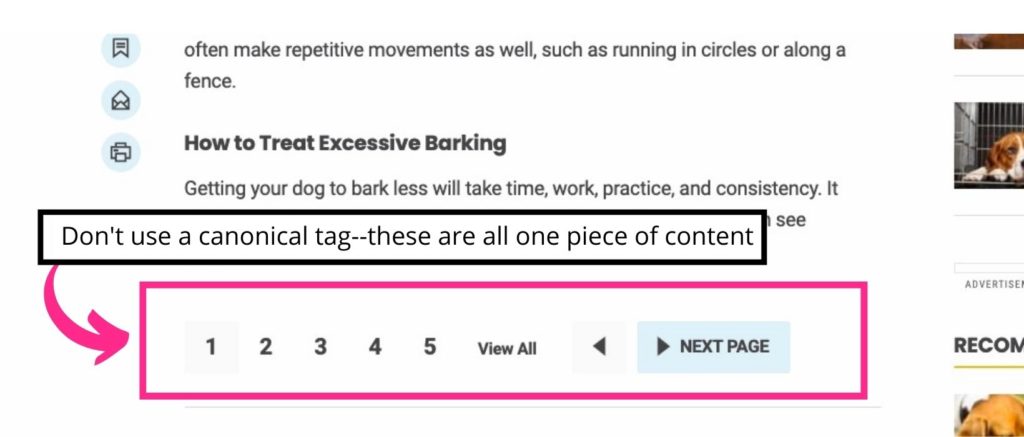
When creating blog posts or guides with multiple web pages, do not canonically link to the first page in the series from the subsequent pages. This will prevent a Googlebot from indexing the full series. Instead, you will want to substitute rel=”canonical” with rel=”prev” and rel=”next”.
6. Not Using Canonicals with Hreflang Tags
Hreflanf tags tell Google that a page appears in multiple languages to better serve a diverse and multi-regional audience. Differing language versions can be viewed as content duplicates. Therefore, Google asks that webmasters always use Hreflang tags in conjunction with the canonical tags.
7. Using Multiple Canonical Tags on One Page
An often overlooked issue is accidentally using more than one rel=canonical tag. This problem can arise when more than one person edits a page. Luckily, it’s easy to fix and easy to avoid if you’re aware of it.
8. Basic Typos in the Canonical URL
If you inserted a canonical tag, but notice organic traffic arriving at the non-preferred page, double-check that all elements are placed correctly. Note that one of the most commonly skipped characters is the end slash.
Embrace Canonical Tags & Enjoy Better SEO Results
If you’re not using canonical tags, you’re likely missing out. Canonical tags can prevent a multitude of duplicate content issues that arise from URL variants, resulting in better SEO performance and a more organized site for Google to crawl. Furthermore, when you implement canonical tags, all of your search metrics will be compiled into one tidy page rather than countless variants.
Stay ahead on your search metrics and make the most of your consolidated data with the best keyword tracking tool available.
Popular Articles
Want access to the leading SEO software suite on the market?
See why the world's best companies choose LinkGraph to drive leads, traffic and revenue.
“They are dedicated to our success and are a thoughtful sounding board when we run ideas by them - sometimes on ideas and projects that are tangential to our main SEO project with them. Also, I love that they allow for shorter-term contracts compared to the usual 1-year contract with other SEO companies. Lastly, they deliver on their promises.”

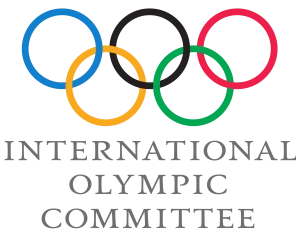

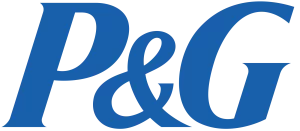

Enter your website URL and we’ll give you a personalized step-by-step action plan showing what exactly you need to do to get more traffic.
- Better tools
- Bigger data
- Smarter SEO Insights
Real-time SEO Auditing & Issue Detection
Get detailed recommendations for on-page, off-site, and technical optimizations.

